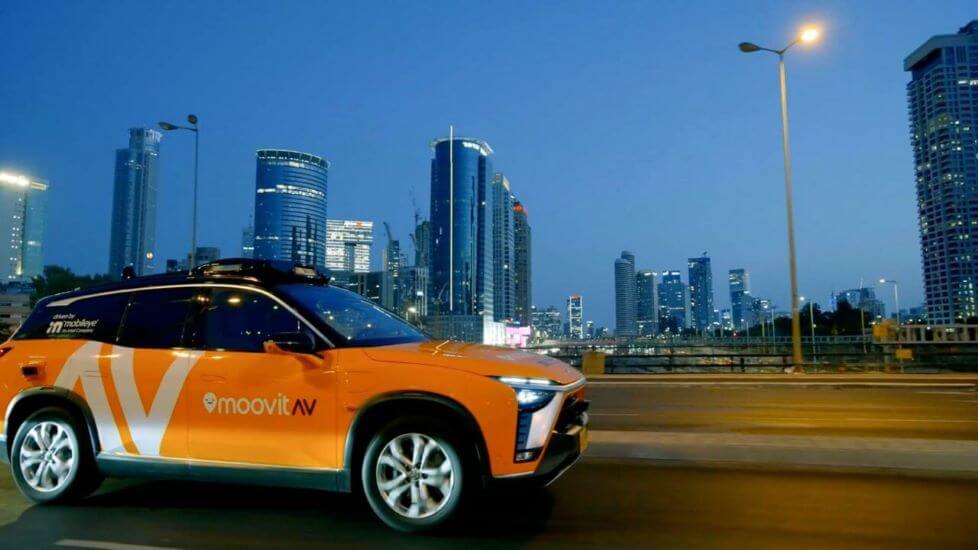
The News: Intel CEO Pat Gelsinger announced at IAA Mobility 2o21 the partnership between Luminar and Intel Mobileye on robotaxi service. Mobileye, an Intel company, unveiled the 6-passenger, road-ready electric autonomous vehicle (AV) used for commercial driverless ride-hailing services in Tel Aviv and Munich starting in 2022. Equipped with the Mobileye Drive™ self-driving system featuring 8 EyeQ™5 SoCs in the AVKIT58, the all-electric Mobileye AVs will operate under the MoovitAV service branding. Read the full news release on Intel.
IAA 2021: Luminar and Intel Mobileye Partner on Robotaxi Service
Analyst Take: This year the IAA Mobility 2o21 show is, as to be expected, rich in disruption. As someone more from the tech side than the automotive side, it is unquestionable, however, that semiconductors and software are the underpinnings of the automotive business in the future.
Intel CEO Pat Gelsinger delivered a late afternoon keynote on the first day of the IAA Mobility 2021, in which he broke the news on this partnership between Luminar and Intel Mobileye, focused on robotaxi service. The company defined it as more or less “The Trinity” of solutions for getting to full autonomy.
Although, to truly go from L2+ to L4, it will take a certain amount of additional capabilities and redundancy. For Mobileye, adding Luminar’s Lidar technologies adds this capable technology to the existing computer vision and radar sensing that drives Mobileye in its current form. This trio of sensing technologies is coupled with Mobileye’s crowd-sourced Roadbook™ AV map, and Responsibility-Sensitive Safety (RSS) driving policy. By putting together this trio of solutions, it will enable Intel subsidiary Moovit to leverage its global consumer and transportation network to build a commercial driverless ride-hailing service on the foundation of Mobileye.
A Quick Word About Luminar
Luminar has received much attention since it de-SPAC’d in late 2020. The entire SPAC (Special Purpose Acquisition Corp) market has been somewhat punished for reasons not entirely known, and Luminar has unfortunately been tied up in that situation. Regardless, our initial review of Luminar and its technology finds the company is built on a solid foundation of democratizing a highly capable technology (Lidar) to move Level 4 driving solutions forward. We also see the company’s efforts are working to fix Lidar’s reputation of being expensive and its known design challenges best represented as those large rooftop sensors on the Google or Apple cars that look like they are used for storm chasers. Seeing the technology in action at the IAA Munich conference helped as well.
I was able to spend an hour with Luminar CEO Austin Russell at this year’s IAA Mobility 2021 event. Not only did he talk me through his vision for the company, but he also provided his unique vision for Lidar and how the technology looks to be a critical piece of the Level 4 ADAS story. While Lidar is often judged as cost-prohibitive for production vehicles, it is becoming increasingly affordable, and working in parallel with typical machine vision and radar technologies, it seems destined to play a part in bridging the L2+ to L4 gap that so many are anticipating.
Overall Impressions of the Intel + Luminar Tie Up
From a partnership standpoint, the move is beneficial to both companies. Robotaxis are a complicated topic. Moving to full autonomy on busy streets with unpredictable human behaviors and many other factors is a problem many companies have been attempting to solve, and to date, we have more black marks than true success stories. Adding Luminar’s Lidar technology to Mobileye’s capable ADAS capabilities should make solving the more challenging complexities in robotaxis more likely in a shorter horizon.
Disclosure: Futurum Research is a research and advisory firm that engages or has engaged in research, analysis, and advisory services with many technology companies, including those mentioned in this article. The author does not hold any equity positions with any company mentioned in this article.
Other insights from Futurum Research:
Intel Q2 Continues Hot Streak as Chip Demand Continues to Surge
The Strategy Behind Intel’s Acquisition of Mobility Player Moovit
Image Credit: Zoom
The original version of this article was first published on Futurum Research.
Daniel Newman is the Principal Analyst of Futurum Research and the CEO of Broadsuite Media Group. Living his life at the intersection of people and technology, Daniel works with the world’s largest technology brands exploring Digital Transformation and how it is influencing the enterprise. From Big Data to IoT to Cloud Computing, Newman makes the connections between business, people and tech that are required for companies to benefit most from their technology projects, which leads to his ideas regularly being cited in CIO.Com, CIO Review and hundreds of other sites across the world. A 5x Best Selling Author including his most recent “Building Dragons: Digital Transformation in the Experience Economy,” Daniel is also a Forbes, Entrepreneur and Huffington Post Contributor. MBA and Graduate Adjunct Professor, Daniel Newman is a Chicago Native and his speaking takes him around the world each year as he shares his vision of the role technology will play in our future.

